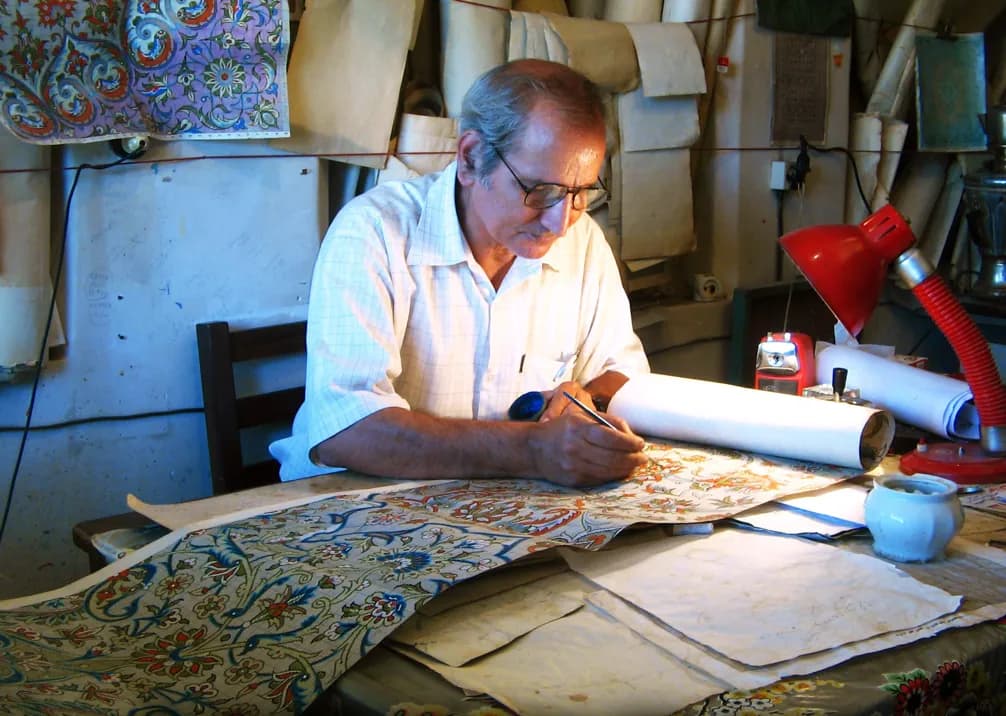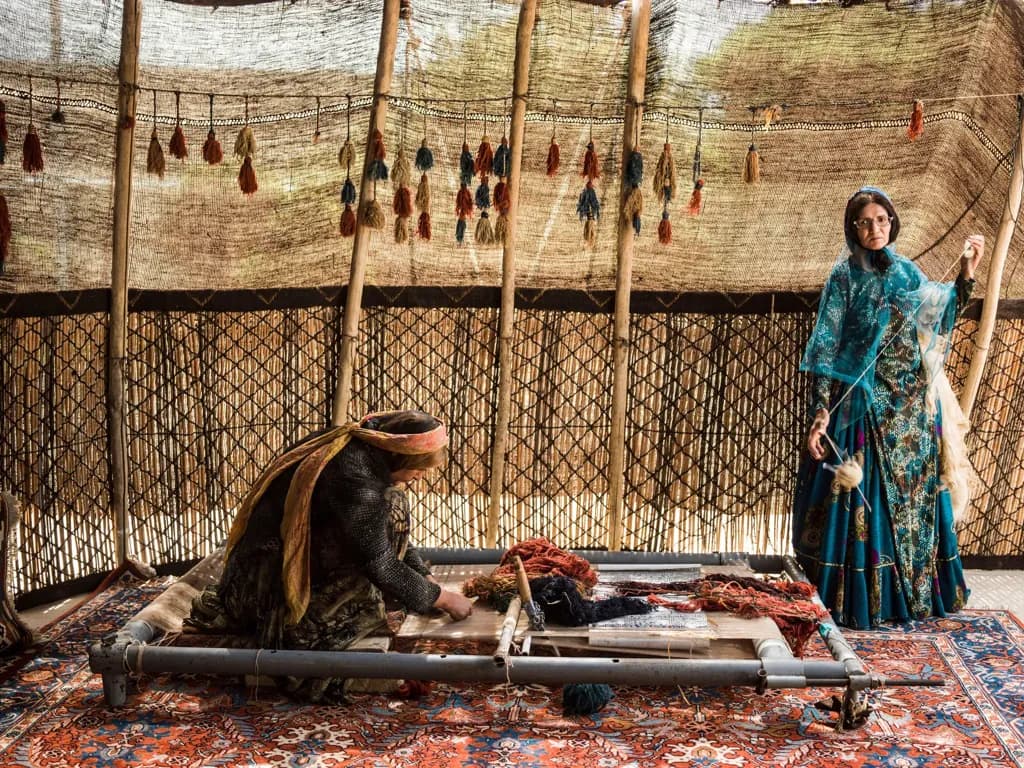The distinctive Kalat-e Naderi rugs, crafted by nomadic weavers in the mountainous regions near the historic Kalat-e Naderi fortress in northeastern Iran, represent one of the most authentic expressions of traditional Sumak weaving. These flat-weave carpets, characterized by their unique brocading technique, stand apart from traditional pile rugs through their specialized weaving method that creates a smooth, embroidered appearance.
Kalat-e Naderi Sumaks showcase bold geometric patterns that reflect the rugged landscape of their origin. The designs often feature dramatic diamonds, polygons, and angular medallions, punctuated by smaller motifs that tell stories of nomadic life. These patterns, passed down through generations of tribal weavers, carry symbolic meanings deeply rooted in the region's cultural heritage.
The color palette of these rugs reflects the natural environment of the Kalat-e Naderi region, with rich reds, deep blues, and warm browns predominating. Weavers traditionally used natural dyes sourced from local plants and minerals, creating colors that age beautifully and develop a distinctive patina over time. White and ivory accents provide striking contrast, while occasional touches of green and yellow add depth to the overall composition.
Unlike pile carpets, these Sumak weaves are created using a supplementary weft wrapping technique that results in a flat surface with a subtle texture. This specialized weaving method produces pieces that are simultaneously lightweight and incredibly durable. The technique allows for exceptional detail in geometric patterns while creating a textile that lies completely flat, making these pieces particularly versatile in contemporary settings.
The materials used in Kalat-e Naderi Sumaks reflect their nomadic origins. The warp and weft are typically wool, though some pieces incorporate goat hair for added strength. The wool used is locally sourced, known for its high lanolin content which provides natural water resistance – a crucial feature for textiles created in nomadic contexts.
Size variations in Kalat-e Naderi Sumaks tend to be more modest than urban workshop carpets, reflecting their nomadic origins and the limitations of portable looms. Common formats include medium-sized rugs and runners, though larger pieces are occasionally produced. Each size maintains the characteristic tightness of weave and precision of pattern that distinguishes high-quality Sumak work.
Contemporary Kalat-e Naderi weavers maintain strong connections to traditional patterns and techniques while adapting to modern market demands. Their work represents a direct link to ancient textile traditions, with each piece reflecting both individual artistic expression and centuries of collective knowledge.
These rugs are particularly valued for their combination of decorative appeal and practical durability. The flat-woven structure makes them ideal for high-traffic areas, while their striking geometric designs add dramatic visual interest to any space. Their lightweight nature also makes them perfect for use as wall hangings, where their graphic patterns can be fully appreciated as artistic compositions.
The investment value of Kalat-e Naderi Sumaks is enhanced by their increasingly rare authentic nomadic production. As traditional nomadic lifestyles become less common, these pieces represent an important cultural heritage, making them particularly attractive to collectors and enthusiasts of authentic tribal textiles.
Each Kalat-e Naderi Sumak tells a story of nomadic artistry and adaptation, where the challenging terrain and climate of northeastern Iran have influenced the development of a unique and practical art form that continues to captivate collectors and interior designers alike.



























